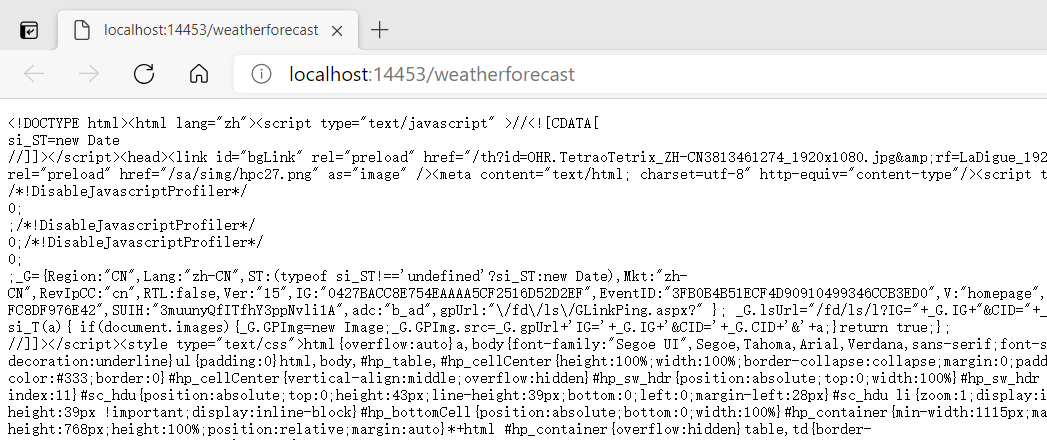ASP.Net Core 是一个开源的,跨平台的,轻量级模块化框架,可用它来构建高性能的Web程序,这篇文章我们将会讨论如何在 ASP.Net Core 中使用 HttpClientFactory。
为什么要使用 HttpClientFactory
可以用 HttpClientFactory 来集中化管理 HttpClient,工厂提供了对 HttpClient 的创建,配置和调度,值得一提的是:HttpClient 一直都是 Http 请求业务方面的一等公民。
HttpClient 虽好,但它有一些缺点:
创建太多的 HttpClient 是一种低效的行为,因为当一个新客户端连接到远程 Server 时,你的应用程序还需要承担着重连远程 Server 的开销。
如果每一个 request 都创建一个 HttpClient,当应用程序负载过大, Socket 必将耗尽,比如默认情况下 HttpClient 会维持至少4分钟的 Connection 连接。
所以推荐的做法是创建一个可供复用的共享式 HttpClient 实例,如果你要打破沙锅问到低的话,即使是创建共享式的 HttpClient 也会有很多问题,比如它会无视 DNS 缓存生效,那怎么办呢?可以用 .NET Core 2.1 引入的 HttpClientFactory 来解决此问题。。。用它来统一化的高效管理 HttpClient。
使用 HttpClientFactory
HttpClientFactory 有两种使用方式。
NamedClient
TypedClient
所谓的 NamedClient 就是注册带有标记的 HttpClient 到 HttpClientFactory 工厂中,下面的代码展示了一个名为 IDGCustomApi 的 HttpClient 的工厂注册。
// This method gets called by the runtime. Use this method to add services to the container.public void ConfigureServices(IServiceCollection services){services.AddHttpClient("IDGCustomApi", client =>{client.BaseAddress = new Uri("https://localhost:6045/");client.DefaultRequestHeaders.Add("Accept", "application/json");client.DefaultRequestHeaders.Add("User-Agent", "IDG");});services.AddControllers();}所谓的 TypedClient 就是注册一个你自定义的 HttpClient,我想你肯定有点懵逼了,没关系,我现在就来自定义 HttpClient, 然后通过 AddHttpClient() 注册到容器中。
public class CustomHttpClient{public HttpClient Client { get; }public CustomHttpClient(HttpClient client){Client = client;}}public class Startup{// This method gets called by the runtime. Use this method to add services to the container.public void ConfigureServices(IServiceCollection services){services.AddHttpClient<CustomHttpClient>(client => client.BaseAddress = new Uri("https://localhost:6045/"));services.AddControllers();}}注入 Controller
为了能够在 Controller 中使用,可以将 IHttpClientFactory 通过构造函数方式进行注入,参考如下代码:
[ApiController][Route("[controller]")]public class WeatherForecastController : ControllerBase{private IHttpClientFactory httpClientFactory;public WeatherForecastController(ILogger<WeatherForecastController> logger, IHttpClientFactory httpClientFactory){this.httpClientFactory = httpClientFactory;}[HttpGet]public async Task<string> Get(){var httpClient = httpClientFactory.CreateClient("IDGCustomApi");string html = await httpClient.GetStringAsync("http://bing.com");return html;}}
从 IHttpClientFactory 的默认实现 DefaultHttpClientFactory 的源码也可以看出,httpClient 所关联的 HttpMessageHandler 和 Options 都被工厂跟踪和管控。
internal class DefaultHttpClientFactory : IHttpClientFactory, IHttpMessageHandlerFactory{public HttpClient CreateClient(string name){if (name == null){throw new ArgumentNullException("name");}HttpMessageHandler handler = CreateHandler(name);HttpClient httpClient = new HttpClient(handler, disposeHandler: false);HttpClientFactoryOptions httpClientFactoryOptions = _optionsMonitor.Get(name);for (int i = 0; i < httpClientFactoryOptions.HttpClientActions.Count; i++){httpClientFactoryOptions.HttpClientActions[i](httpClient);}return httpClient;}public HttpMessageHandler CreateHandler(string name){if (name == null){throw new ArgumentNullException("name");}ActiveHandlerTrackingEntry value = _activeHandlers.GetOrAdd(name, _entryFactory).Value;StartHandlerEntryTimer(value);return value.Handler;}}译文链接:https://www.infoworld.com/article/3276007/how-to-work-with-httpclientfactory-in-aspnet-core.html
函数)









)


 绝对值得体验的冒险历程)





